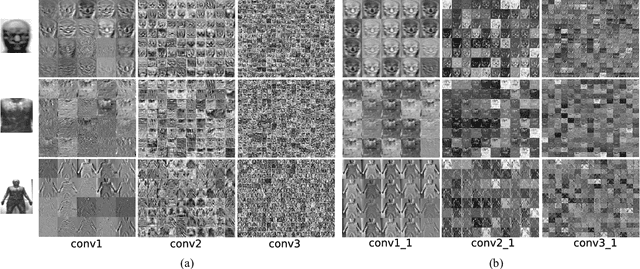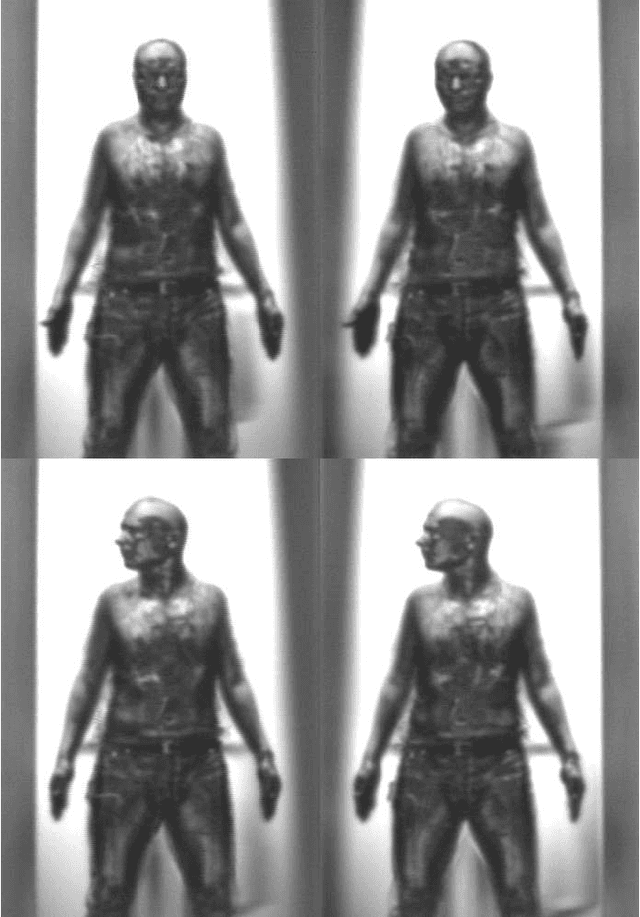V. M. Patel
Exploring Body Texture from mmW Images for Person Recognition
Mar 27, 2022



Abstract:Imaging using millimeter waves (mmWs) has many advantages including the ability to penetrate obscurants such as clothes and polymers. After having explored shape information retrieved from mmW images for person recognition, in this work we aim to gain some insight about the potential of using mmW texture information for the same task, considering not only the mmW face, but also mmW torso and mmW wholebody. We report experimental results using the mmW TNO database consisting of 50 individuals based on both hand-crafted and learned features from Alexnet and VGG-face pretrained Convolutional Neural Networks (CNN) models. First, we analyze the individual performance of three mmW body parts, concluding that: i) mmW torso region is more discriminative than mmW face and the whole body, ii) CNN features produce better results compared to hand-crafted features on mmW faces and the entire body, and iii) hand-crafted features slightly outperform CNN features on mmW torso. In the second part of this work, we analyze different multi-algorithmic and multi-modal techniques, including a novel CNN-based fusion technique, improving verification results to 2% EER and identification rank-1 results up to 99%. Comparative analyses with mmW body shape information and face recognition in the visible and NIR spectral bands are also reported.
Semi-Supervised Image Deraining using Gaussian Processes
Sep 25, 2020



Abstract:Recent CNN-based methods for image deraining have achieved excellent performance in terms of reconstruction error as well as visual quality. However, these methods are limited in the sense that they can be trained only on fully labeled data. Due to various challenges in obtaining real world fully-labeled image deraining datasets, existing methods are trained only on synthetically generated data and hence, generalize poorly to real-world images. The use of real-world data in training image deraining networks is relatively less explored in the literature. We propose a Gaussian Process-based semi-supervised learning framework which enables the network in learning to derain using synthetic dataset while generalizing better using unlabeled real-world images. More specifically, we model the latent space vectors of unlabeled data using Gaussian Processes, which is then used to compute pseudo-ground-truth for supervising the network on unlabeled data. Through extensive experiments and ablations on several challenging datasets (such as Rain800, Rain200L and DDN-SIRR), we show that the proposed method is able to effectively leverage unlabeled data thereby resulting in significantly better performance as compared to labeled-only training. Additionally, we demonstrate that using unlabeled real-world images in the proposed GP-based framework results
 Add to Chrome
Add to Chrome Add to Firefox
Add to Firefox Add to Edge
Add to Edge